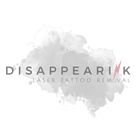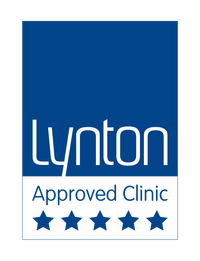Hair & Blemish Removal
Care Instructions
Patch test – what to look for
Patch tests are carried out to determine the treatment parameters and to judge how your skin might react to a full treatment. A patch test is a small trial in an area with similar hair and skin to the treatment site and allows the practitioner to assess how well the light energy is being absorbed and whether the skin is responding as would be expected.
Following your patch test
Make a note of any redness or swelling and how long it takes to reduce following the patch test, also whether or not the skin blisters or feels excessively hot and for how long.
Before your treatment
There should be no active or fake tan in the area to be treated. Use of sun beds or prolonged exposure to sunlight is not allowed in the month prior to treatment. The use of sunblock is preferable; however alternatively a sunscreen of at least SPF 30 can be used on the area between treatments. Sun-tans should be left to fade before treatment can start. Fake tans and gradual tanning products must all be fully faded before treatment can commence. We reserve the right to charge for any appointment booked but abandoned due to active sun-tan or fake-tan. Avoid waxing, plucking, hair removal creams and bleaching for one month prior to hair removal treatments. Hair should be shaved prior to treatment and be no longer than 1mm in length. The area to be treated should be free from make-up, perfume, deodorant and body or face cream. We ask that if the area to be treated is covered with hair that you shave the area. (However for a hair removal consultation, we need to see the hair which you want removing therefore do not shave on initial consultation) – only at following appointments. A medical history is taken at consultation before starting treatment; however we rely on you to inform us of any changes to this. We need to know of any medication you are taking, including those bought from a chemist or herbalist. You are advised to wear loose clothing so the area isn’t aggravated after the session. Drink lots of water before and after treatment. Make sure that you arrive in good time for your appointment; this will allow us to pre-cool the skin if necessary.
Straight after your treatment
In order to minimise skin heating and to reduce the likelihood of skin reactions, the treatment area may be cooled before, during and after the procedure. If the area still feels hot at home you can apply a cold flannel or cool pack. Do not allow ice packs or ice into direct contact with the skin. Following treatment, the area may appear red and raised and you may experience a tingling sensation. This is completely normal and should settle over the next few days. Occasionally you may experience swelling or bruising and this can last anything from 1-2 days up o 1-2 weeks. If you experience swelling, it is usually worse 1-2 days following treatment. If it follows a treatment to a facial area, sleeping with your head raised on pillows will minimise its’ appearance. Ice packs will also help to reduce the swelling. If your skin is particularly sensitive and prone to histamine reactions, you may also wish to consider taking anti-histamine medication. Following vascular treatments a bruise may appear at the treated area. This may last up to 15 days and as the bruise fades there may be brown discolouration of the skin. This usually fades in 1-3 months. When larger vessels are treated they may take on a darker colour. Again this may take up to four weeks to resolve as the body reabsorbs the damaged vessels. Make-up can be applied after several hours, if the skin is not sore or broken. However, we advise caution if the area is feeling sensitive. Remove make up carefully as rubbing the skin can cause irritation or infection. If the skin at the treatment area becomes broken, then make-up should be avoided. Care should be taken to avoid trauma to the treated area for 4-5 days afterwards. Avoid strenuous activities, sauna and steam, excessively hot baths, massaging etc. Wash and bathe as normal but take cool showers rather than hot baths. The skin should be patted dry and not rubbed. Use Lynton Light Soothe serum to keep the area moisturised and the skin protected. If there is any discomfort, treat the area as you would sunburn. Use a sunscreen (SPF 30+) and protect the area from sunlight as much as possible between treatments and for at least one month after treatment ends. Failure to do this can lead to sunburn and hyper-pigmentation of the treated area. (Most cases of changes in pigmentation occur when the treated area has been exposed to sunlight, or in people with darker skin types). If blistering occurs keep the area clean and dry and allow to heal naturally. Do not use any lotions or creams on open skin as this may increase the risk of infection. Do not pick grazes or blisters – as this may increase the chance of a scar occurring. Once the skin has healed, a high protection sunscreen should be used daily for 12 months to prevent pigmentation changes to the skin.
Get in touch
If you have any further questions prior to treatment, please contact us here.
"He Said...She Said"
When I first started my Laser Removal Journey I was very nervous and unsure what to expect, I couldn’t have asked for a more friendly, professional and very informative team than Matt and Jodie! Even down to the aftercare they had it all covered! I’m loving the results and I have complete trust in them. I have started on my second removal with them and I honestly would not go anywhere else. Thanks Guys x



